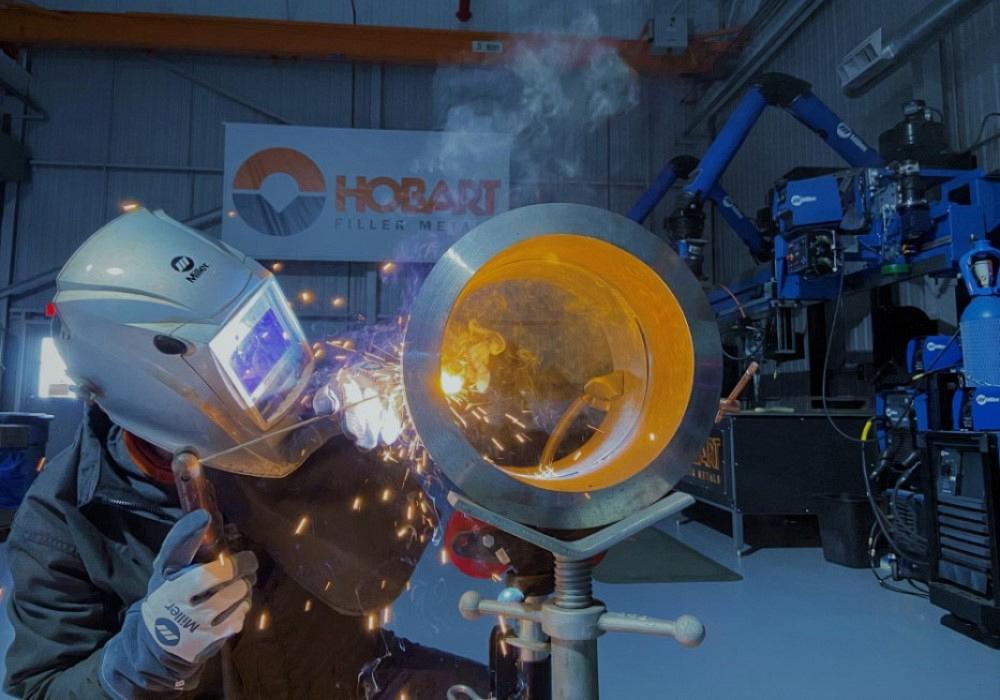Preventing Weld Undercut Made Easy: Secret Techniques Unveiled
Preventing Weld Undercut Made Easy: Secret Techniques Unveiled
Blog Article
Comprehending the Causes and Solutions for Undercut Welding in Metal Fabrication Procedures
In the realm of steel fabrication procedures, the occurrence of undercut welding poses a significant obstacle that demands a detailed understanding of its causes and viable services. The elaborate interaction of numerous aspects during welding operations can lead to this unwanted phenomenon, affecting the architectural honesty and total high quality of the welded joints - Preventing weld undercut. By dissecting the origin of undercut welding and checking out reliable restorative steps, producers can raise the standard of their craftsmanship and make sure the manufacturing of perfect steel elements
Typical Sources Of Undercut Welding
Often ignored in steel manufacture, undercut welding takes place due to various variables that require careful attention and competence to be successfully reduced. Additionally, incorrect welding strategies, such as making use of the wrong welding angle or take a trip speed, can additionally add to undercut development. The choice of welding specifications, such as voltage, current, and cord feed rate, plays a substantial role in the incident of undercut welding.
Influence of Incorrect Welding Parameters
Imprecise welding parameters can considerably endanger the stability and quality of bonded joints in metal fabrication processes. The effect of inaccurate welding specifications manifests in various means, leading to structural weaknesses and issues in the bonded parts. One critical element affected by inappropriate welding specifications is the infiltration deepness of the weld. Insufficient warm input due to low welding currents or excessively high travel speeds can lead to inadequate blend in between the base steels, resulting in incomplete joint penetration and weakened bonds. Conversely, extreme warm input brought on by high welding currents or sluggish travel speeds can cause too much and burn-through support, creating a fragile and unpredictable weld structure. Furthermore, inaccurate criteria such as improper voltage settings or wrong electrode angles can add to irregular weld bead profiles, absence of combination, and boosted chances of problems like damaging. As a result, careful attention to welding parameters is paramount to guarantee the manufacturing of top quality welds with the desired mechanical residential or commercial properties and architectural stability.
Result of Improper Lantern Angle
Inappropriate lantern angle in welding procedures can considerably influence the quality and integrity of the last weld joints in metal construction procedures. The torch angle plays a crucial function in figuring out the warm input and distribution during welding. When the lantern angle is inaccurate, problems such as undercutting can arise. Undercutting is a typical welding issue where a groove develops along the weld toe, deteriorating the joint and jeopardizing its structural integrity.
A lantern angle that is as well steep can lead to not enough infiltration, incomplete fusion, and raised spatter. On the various other hand, a torch angle that is as well shallow can result in too much infiltration, burn-through, and distortion of the base material. Preventing weld undercut. Correct lantern angle is vital for guaranteeing consistent weld top quality, stamina, and appearance
To prevent damaging and various other defects triggered by incorrect torch angles, welders have to be trained to keep the right torch angle throughout the welding procedure. Regular monitoring and change of torch angles throughout welding can help attain sound welds with marginal problems.
Duty of Inadequate Welding Methods

An additional element of insufficient welding methods is incorrect weld preparation. Inadequate cleaning of the base steels, wrong joint layout, or not enough edge preparation can all add to undercut welding. Insufficient shielding gas insurance coverage or making use of the incorrect type of gas can result in incomplete blend and the development of undercut problems.
To deal with the duty of poor welding methods in metal manufacture processes, it is vital to offer extensive training for welders. Proper education and learning on welding specifications, joint preparation, and securing gas choice can help protect against undercut welding and make sure top quality welds in steel construction projects.
Reliable Solutions for Undercut Welding
Dealing with undercut welding in metal manufacture needs implementing efficient solutions to improve weld quality and architectural integrity. Among the primary options to combat undercut is to readjust welding parameters such as voltage, current, and take a trip rate to guarantee correct heat input and blend. By fine-tuning these settings, welders can stop excessive melting of the base metal and filler product, reducing the probability of undercut development.
Furthermore, correct joint preparation is critical in avoiding undercut. Making certain clean base metal surface areas cost-free of contaminants and utilizing the ideal bevel angle can help promote far better weld infiltration and lower the threat of undercut - Preventing weld undercut. Employing suitable welding methods, such as oscillating the torch or weaving, can likewise aid in dispersing warmth evenly and loading the weld joint sufficiently, minimizing the opportunity of undercut defects
Moreover, picking the appropriate welding consumables, consisting of electrodes and filler steels, is crucial in reducing undercut. Utilizing materials with proper chemical make-ups and mechanical homes can add to accomplishing audio welds with marginal undercut. Normal examination and quality assurance procedures must likewise be carried out to identify and resolve undercut concerns without delay, making certain the total honesty of made steel elements.

Conclusion
Finally, understanding the causes and remedies for undercut welding in steel construction processes is important for achieving top quality welds. By addressing usual reasons such as inaccurate welding parameters, improper lantern angle, and insufficient welding techniques, welders can prevent damaging and make sure strong, durable welds. It is essential to take note of these aspects and execute effective options to enhance the overall welding procedure and end product top quality.

Report this page